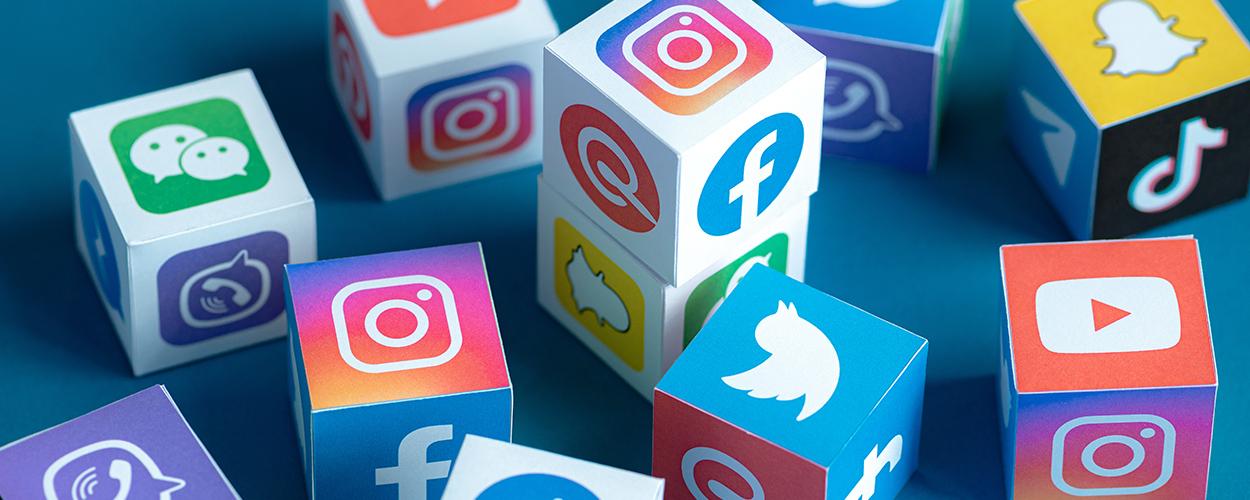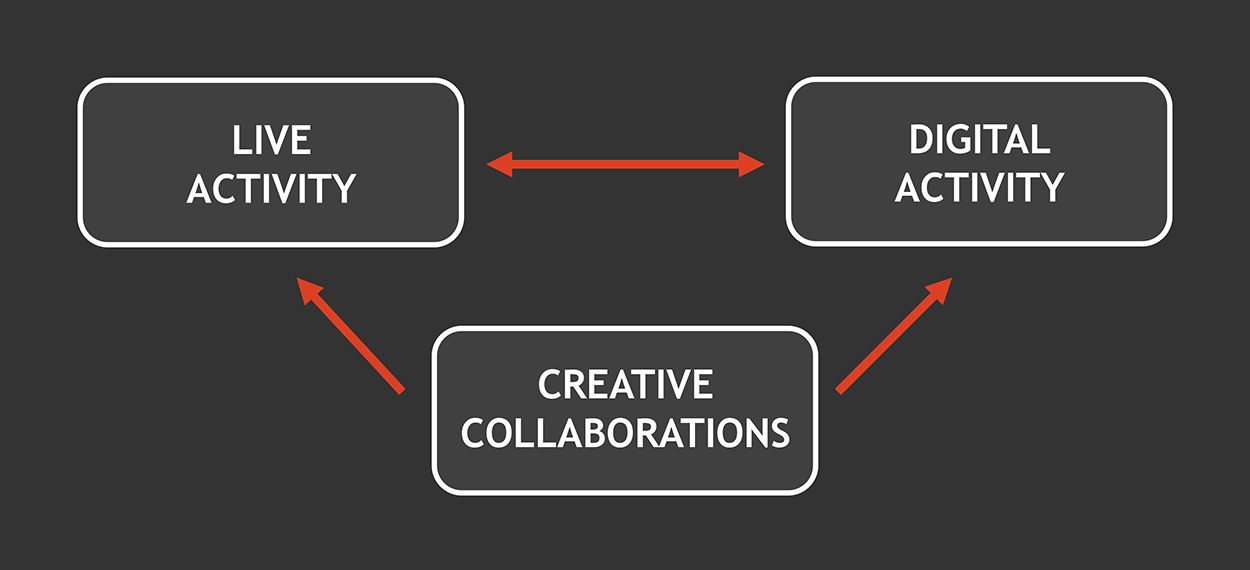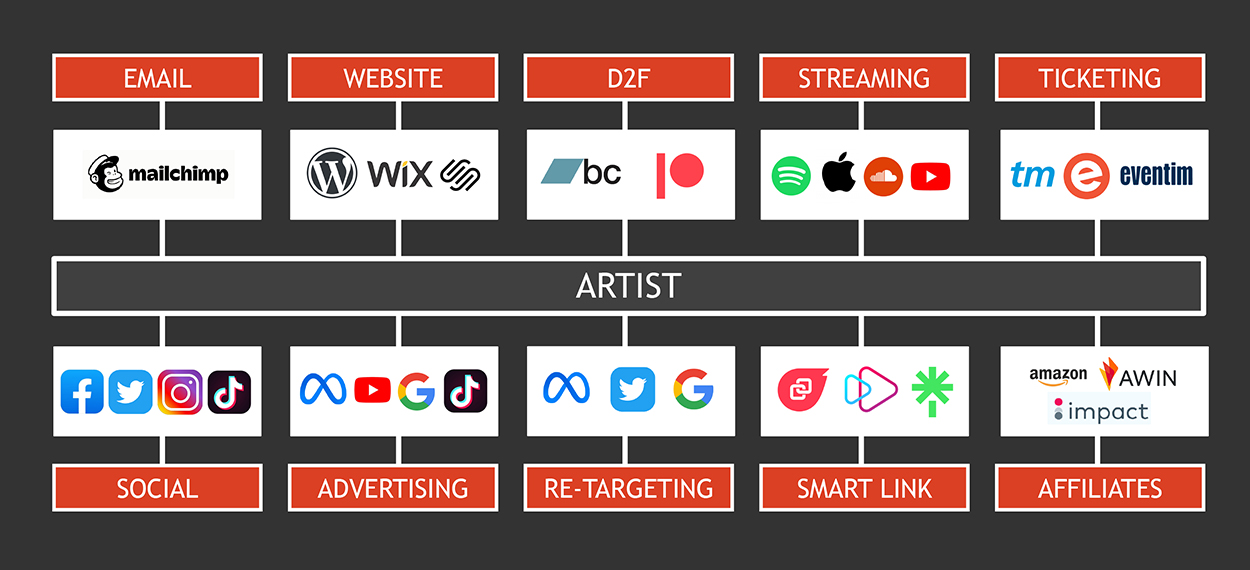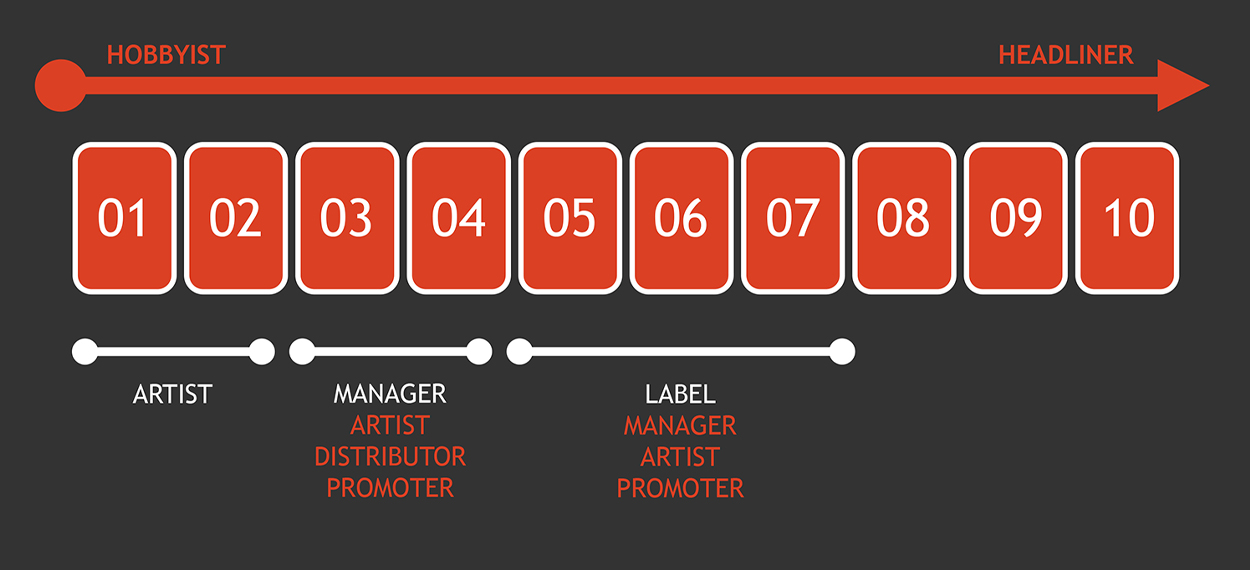This website uses cookies so that we can provide you with the best user experience possible. Cookie information is stored in your browser and performs functions such as recognising you when you return to our website and helping our team to understand which sections of the website you find most interesting and useful.
CMU:DIY Guides Music Marketing Library
Building A Fanbase
By Chris Cooke | Last Updated: February 2023

Here we go – find out about the different ways that frontline artists go about building a fanbase, both during the DIY Phase and once they are working with music industry partners.
You can also download the slides that accompany the lecture version of this guide and check out related resources available elsewhere in the CMU library.


#01: DIY Phase artists need to start the fanbase building process themselves.
Frontline artists – also sometimes called ‘featured artists’ – are the musicians who are up front on stage, who build a brand and release music under that brand, and who seek to grow and monetise a fanbase.
If you were to map the career of a frontline artist – from hobbyist to headliner – and broke that career down into ten steps, we reckon that the traditional music industry only really gets involved at about step four.
After that point an artist will start to work with business partners in the music industry – like managers, labels, publishers, agents and so on – with the aim of progressing to step six or seven, at which point the artist should be able to make a decent living from their music-making.
A small number of artists will then progress onwards to steps eight, nine and ten – the Fame And Fortune Phase.
But what happens in the initial three steps – what we call the DIY Phase – and how can artists progress through that phase to get to the point where business partners in the music industry want to work with them?
Obviously the artist needs to hone their craft as a music-maker and – in doing so – write some great songs, record some great tracks and develop a great show. But the other key task during the DIY Phase is finding an audience – ie building a fanbase.
Artists generally need to get the fanbase building process going themselves in the DIY Phase – to demonstrate to the industry, and potential future business partners, that there is an audience for the music.
Once on board those music industry business partners will help escalate the fanbase building process and seek to significantly grow the audience, but generally those business partners need to see that there is an initial fanbase already in place that they can work with.
So, once some songs are written and some tracks are recorded, DIY Phase artists need to get going with some fanbase building.
This is a tricky process and isn’t usually something that happens overnight. Quite what works varies from artist to artist of course, but there are some tactics that most artists employ.


#02: At the DIY Phase fanbase building will centre on live and digital activity – collaboration is also key.
First the live activity. Although gigging and touring is obviously an important revenue stream for many frontline artists, during the DIY Phase it is also a key way to get the fanbase building process underway, and to find and engage with an initial audience.
This means artists need to put together a good but flexible show – which can be performed in various different formats – and then look for as many opportunities to perform live as possible.
In particular, they need to look for opportunities to play to potential new fans, including open mic nights, regular club and gig nights, guest spots and support slots. As momentum builds, festivals also become a great way to play in front of new audiences.
It’s important to remember that these shows are as much about fanbase building as they are making money – especially as some of these performances won’t make the artist much money at all. So artists should look for subtle ways to encourage potential fans to connect with them online.
Which brings us to the digital activity. Alongside the shows, artists need to have a presence on the key streaming and social platforms.
So, have some music (it can few tracks or an EP) available to play via the streaming services, and other content on social platforms like Instagram, TikTok, Twitter and Facebook.
Which digital platforms an artist uses – and what they do with each platform – depends greatly on them and their fanbase. If possible, it’s good to have a presence on all of them – so whichever streaming or social platform a fan goes to, they can connect with the artist.
But the artist’s resources are always going to be super tight at this stage, meaning they are probably going to prioritise certain platforms over others.
So the artist is more prolific in posting content to one or two of the social platforms, using the others for occasional more substantial posts or for providing simple updates on activity happening elsewhere online.
Artists should also think about setting up a mailing list so that they can directly email the core fanbase, and having a simple website that sign-posts everything else happening online.
It’s also worth considering early on making it easy for super-fans to financially support the artist though donations or memberships, or by buying merch, using platforms like Patreon and Bandcamp.
Collaboration is also key at this stage.
Aspiring frontline artists should seek to collaborate with other DIY Phase music-makers and creators, including on making content to share on social platforms and possibly on staging live events too.
Artists and creators who collaborate in this way can share the workload, utilise each other’s skills, and – crucially – access each other’s audiences.


#03: Every so often artists seek to escalate fanbase growth with a bigger campaign usually around a new release.
This combination of live and digital activity – and creative collaborations – will be an ongoing constant process during the DIY Phase, with the artist regularly gigging, posting content and pursuing collaborations, and in doing so slowly but surely connecting with and engaging new fans.
However, every so often most artists will stage a more formalised and prolific marketing campaign to try to escalate the fanbase building process over a relatively short period of time. These campaigns are usually connected to a new release – whether that’s a track, EP, mixtape or full album – and will run for a fixed time both before and after the release.
Once an artist is working with management and a higher-level distributor – and especially if they sign to a label – those business partners will play a key role in planning and delivering these marketing campaigns. Though many artists run the first couple of campaigns themselves during the DIY Phase.
These release-centric marketing campaigns will involve more live activity, digital activity and collaborations.
In terms of social media, this is when it probably makes most sense for the artist to spend some money on digital advertising, pushing their promotional content further through key social platforms like Instagram and TikTok.
However, there will likely be other elements to the campaign as well. In particular, influencing the influencers.
Which means pitching the new music to key people at the music press, music radio, music TV, club DJs, music bloggers, music podcasts and – of course – the curators of playlists on the streaming services.
An artist may also seek to work with other creators and influencers who have relevant audiences on the key social and digital platforms, ie beyond the artist’s usual network of collaborators.
Plus, they should make sure that any current and past collaborators – and any existing champions within the industry – are kept up to date about the release, in the hope that they will shout about it via their social channels.
Obviously most artists in the DIY Phase will have a very limited amount of time and money to invest in these marketing campaigns – so the trick is to identify what marketing activity is most effective and prioritise that work.
Artists should put together a schedule for all this activity – and make sure they leave themselves plenty of time to do everything ahead of the actual release. Though at the same time they should also be ready to respond and adapt their plans if new opportunities suddenly pop up.


#04: Digital marketing is all about trial and error – so use the data!
When an artist is marketing via digital channels – creating content, posting it to social media and possibly boosting the content with some advertising spend – it’s really important to use the data to identify what works.
What kind of content gets the most traction? Which platforms work best? What messages and calls to action get the most attention?
What days and times are best? If you are spending money on digital advertising, what is the best way to target the campaign? Does this activity actually drive more streams or other sales?
The answer to all these questions is “it depends”. It depends on the artist and the fanbase. And the latest trends and developments on the big social platforms. Figuring out what works for any one artist and fanbase is a constant process of posting some content, checking the data and asking the most important question of all: “did it work?”
There are various sets of data to check. Each digital platform provides some information about how many people saw, liked, commented on and/or shared the content. When artists spend money with the platforms and make use of each platform’s advertising tools, they get more data.
Artists should also use so called smart links to sign-post their music. Facilitated by companies like Linkfire and Feature.fm, this is where you set up a single webpage for the release, accessed with a single short link, which then has buttons via which people can access a track on each different platform.
Smart links make it easier to tell people where they can find an artist’s music, making fan and marketing communications simpler. But they also provide useful data – ie how many people clicked on each button.
On top of that, artists should be looking at the data available from the streaming services – which is usually accessible via the artist’s distributor and the artist portals run by the services themselves. Was there an uplift in streams and other fan activity after posting the content?
The first few times an artist posts some marketing content, the answer to the key question “did it work?” is probably “no!” But that’s fine.
Next time tweak something – the content, the message, the timing, the ad targeting. And keep doing that until the content starts getting some traction – using the insight gained to inform future marketing.
The MMF Fan Data Guide runs through all the different sets of fan data and what artists and their teams can do with each of them. Also covered in that free guide are things like email data, website data, direct-to-fan data, ticketing data, re-targeting data and affiliate link data.


#05: As an artist reaches step four different business partners will get involved in marketing.
As noted, as an artist starts to work with business partners in the music industry, those partners will support any marketing activity and the wider fanbase building process.
Record labels in particular are often key marketing partners, with a label having its own ‘marketing machine’ that its artists get to utilise. Which is a key reason why many artists want to sign a deal with a record label.
Those business partners will employ similar marketing tactics to the DIY Phase artists. However, those partners should have more knowledge and experience of what works, being able to rely on insights gained for the campaigns they have run with other similar artists.
They will also often have more resources available to create great content, manage the publishing and distribution of that content, and pay for advertising on the different digital platforms.
Business partners will also have contacts and networks that help with influencing the influencers, including in the media, at the streaming services and among online influencers, plus across the music industry.
There are also many specialist music marketing, PR and promotions agencies across the music industry which, together, can do all those things too.
However, marketing agencies usually work on a fee basis, rather than by taking a share of future income, like a manager, distributor or label usually would. Therefore, it’s often distributors and labels who hire and pay for these agencies once they are involved in an artist’s marketing campaigns.





